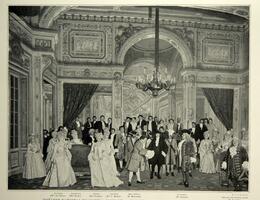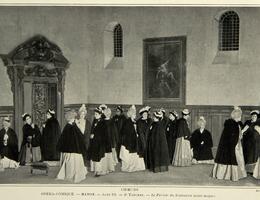Manon
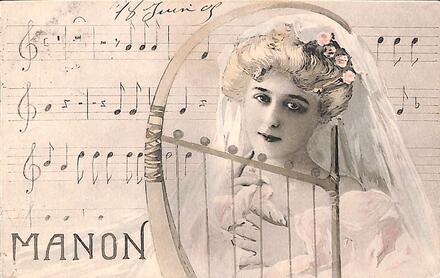
Opéra-comique en 5 actes et 6 tableaux
“We know how vibrant his music is with thrills, transports and would-be eternal embraces. The harmonies are like enlacing arms, the melodies are the necks we kiss; we gaze into women’s eyes to learn at any cost what lies behind.” So wrote Debussy of Massenet. This seems to be a portrait of the heroine of Manon, which was premièred in Paris at the Opéra-Comique (Salle Favart) on 19 January 1884. The opera, to a libretto by Henri Meilhac and Philippe Gille, based on Abbé Prévost’s novel Histoire du Chevalier des Grieux, et de Manon Lescaut, was a popular success from the outset, although the critics were not so enthusiastic. Massenet employed the resources of opéra-comique with virtuosity: dazzling stylisation of the Ancien Régime setting (culminating in Act III, with the scene set in the Cours-la-Reine), variety in style and in the use of dramatic devices (spoken dialogue embedded in the music, or superimposed in melodrama). The vocal style alternates sparkling vocalisations with rich lyricism, while the drama presents a poignant contrast between the carefree innocence of the beginning (Manon’s entry on “Je suis encor’ tout étourdie”) and the gravity that gradually permeates the plot (des Grieux’s Act II Dream Song, “En fermant les yeux”; the end of Act III, when Manon, impassioned, wins back her lover). “Situational” motifs (not connected with the text, and in a looser sense than a leitmotiv) accompany reminiscences and intensify the emotion, as at the moment of Manon’s death, when several melodies reappear, including that of the passionate Act III duet.
Documents and archives
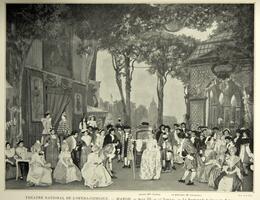
Press illustration, Picture of a scene, Photograph
Scène de Manon (Massenet) : acte III, 1er tableau
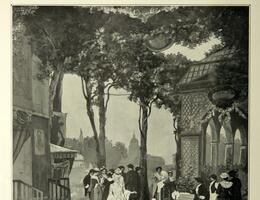
Press illustration, Picture of a scene, Photograph

